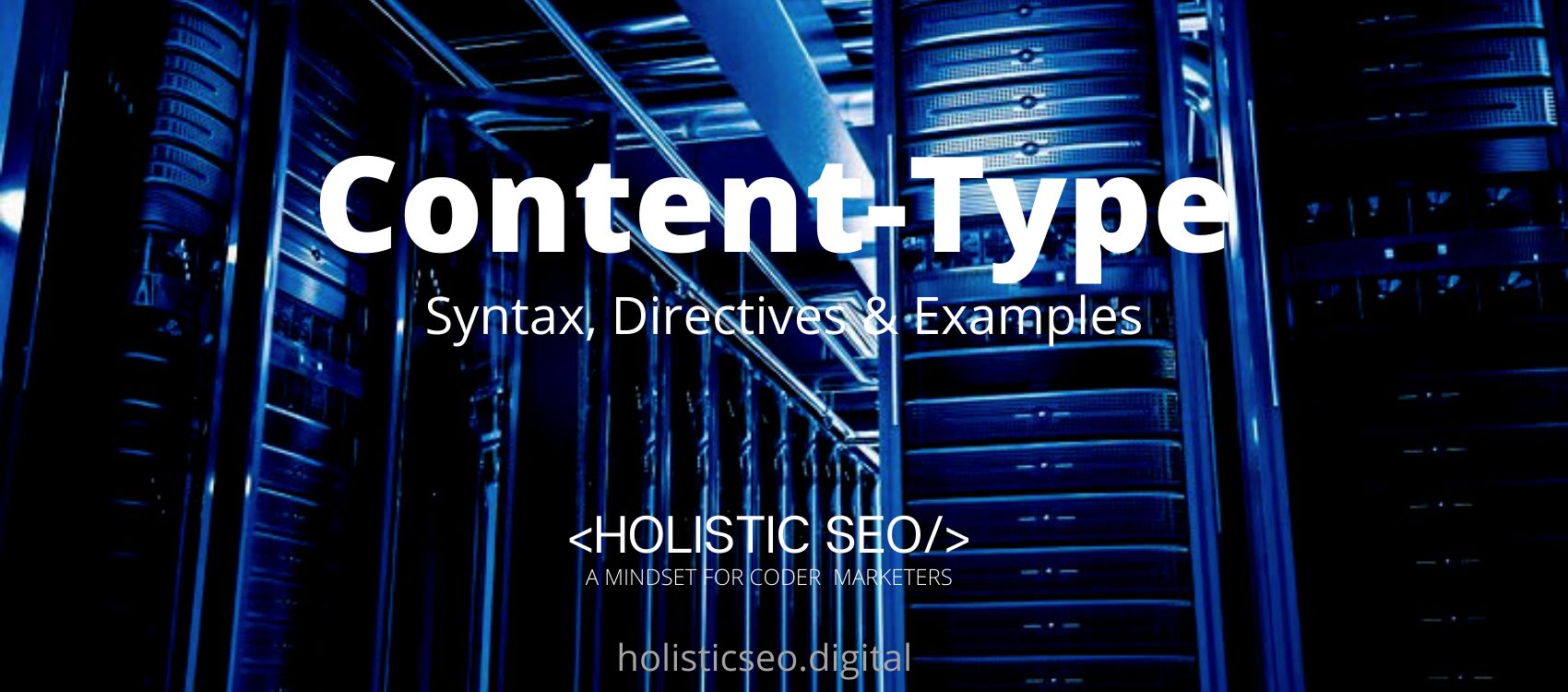The Content-Type HTTP Header is used to display the asset’s first media type before any substance encoding is used for transmission. The mime type is now appropriately called “media type.” However, it is sometimes called “content type,” which is a string sent alongside a record demonstrating the type of the document depicting the substance design. For example, a sound file may be named sound/Ogg, or a picture file image/png. It serves a similar purpose as filename expansions do on Windows. The name is derived from the MIME standard, which was first used in e-mail. The MIME “Multipurpose Internet Mail Extensions” standard is used to represent reports in different structures similar to ASCII text, such as sound, video, and images. Furthermore, it is used for E-Mail attachments, and it has become the true standard to characterize various types of reports anywhere. A Content-Type HTTP Header provides the customer with the true substance of the returned content type in response. It describes the type of content returned to the customer. The program becomes familiar with the types of content that must be stacked on the machine. Each time a program receives a byte stream of a record via the Content-Type HTTP Headers, the program will perform MIME sniffing, which means it will examine the stream it is receiving and then stack the information appropriately. There are multiple values utilizing the Content-Type HTTP Headers. The values of utilizing the Content-Type HTTP Headers are the media type, charset, and boundary. An example of the Content-Type HTTP Header is written below.
Content-Type in HTML forms
Content-Type: text/html; charset=UTF-8The Content-Type HTTP Header Representation Header is seen above. In the article, the Content-Type HTTP Header Syntax, Directives, and Uses examples will be processed.
What is a Content-Type HTTP Header?
The Content-Type HTTP Header is a representation header that is used to show the asset’s first media type before any substance encoding is applied for sending. In response, a Content-Type HTTP Header informs the customer about the true nature of the returned content type. The program becomes familiar with the types of content that it will be required to stack on the machine. Each time a program receives the document’s byte stream via the Content-type HTTP Header, the program performs what is known as MIME sniffing, in which it investigates the stream it is receiving and then stacks the data appropriately.
What are the Syntax of Content-Type HTTP Header?
There are multiple values for using the Content-Type HTTP Header. The values for utilizing Content-Type HTTP Header are composed below.
Content-Type: text/html; charset=UTF-8
Content-Type: multipart/form-data; boundary=somethingWhat are the Directives of Content-Type HTTP Header?
There are multiple directives that are set in the Content-Type HTTP Header. The directives for using the Content-Type HTTP Header are given below.
"media-type"It is the media type that holds the MIME that stands as Multipurpose Internet Mail Extensions sort of the information.
"charset"It holds the character encoding standard. The charset is the encoding standard where the information will be gotten by the programs.
"boundary"It is the boundary that is required when there are multipart elements. The boundary is for multipart elements comprising 70 characters from a bunch of characters known to be exceptionally hearty through email doors, and with no blank area.
An example directive of the Content-Type HTTP Header is given below.
header('Content-type: image/jpeg');//with header Content type
echo file_get_contents("https://media.holisticseo.com/wp-content/uploads/holisticseo-6.png");How to use Content-Type HTTP Header?
The Content-Type HTTP header is used to display the asset’s media type. The media type is a string that is sent along with the record to show how the document is organized. For example, the media type of a picture file will be something like picture/png or picture/jpg. It is clear from using and applying the Content-Type HTTP Header that the Content-Type HTTP Header data inform the program about the type of response it is receiving from the server.
Examples of Content-Type HTTP Header Use
The following are examples of how to use the Content-Type HTTP Header.
- The example shows how the images are read by the browser with and without the Content-type header set.
header('Content-type: image/jpeg');//with header Content type
echo file_get_contents("https://media.facebook.com/wp-content/uploads/facebook.com-6.png");- The ectype attribute on the <form> element specifies the Content-Type of the request in the example of a POST request resulting from an HTML form submission.
<form action="/" method="post" enctype="multipart/form-data">
<input type="text" name="description" value="some text">
<input type="file" name="myFile">
<button type="submit">Submit</button>
</form>- As an example, the request looks like this (less interesting headers are omitted)
POST /foo HTTP/1.1
Content-Length: 68137
Content-Type: multipart/form-data; boundary=---------------------------974767299887498964531610575
-----------------------------974767299887498964531610575
Content-Disposition: form-data; name="description"
some text
-----------------------------974767299887498964531610575
Content-Disposition: form-data; name="myFile"; filename="foo.txt"
<!-- wp:paragraph -->
<p></p>
<!-- /wp:paragraph -->
(content of the uploaded file foo.txt)
-----------------------------974767299887498964531610575--What are the Specification Documents for Content-Type HTTP Header?
The following are the specification documents of the Content-Type HTTP Header.
- RFC 7233 Article 4.1 206 mentions the Content-Type HTTP Header examples and uses.
- RFC 7231 Article 3.1.1.5 discusses the Content-Type HTTP Header definitions and their applications.
What is the type of Content-Type HTTP Header?
The Content-Type HTTP Header is a representation header type since the header depicts the specific portrayal of the asset sent in an HTTP message body.
What are the similar HTTP Headers to the Content-Type HTTP Header?
There are multiple similar HTTP to the Content-Type HTTP Header. The examples are listed below.
- Accept HTTP Header: The Accept HTTP Header is similar to the Content-Type HTTP Header. The Accept HTTP Header instructs the server to choose one of the recommendations based on the content arrangement and to inform the customer via the Content-Type response header. The Accept HTTP Header is similar to the Content-Type HTTP Header because it indicates which content types, communicated as MIME types, the client can understand.
- Content-Disposition HTTP Header: The Content-Disposition HTTP Header is similar to the Content-Type HTTP Header. It is a response header that indicates and assumes that the content will be displayed inline within the program. The Content-Disposition HTTP Header is a Web page, a feature of a Web page, or a link that is downloaded and saved locally. The Content-Disposition HTTP Header is fundamentally similar to the Content-Type HTTP Header as it is defined in the broader context of MIME email messages, but only a subset of the possible boundaries apply to HTTP forms and post requests.
- 206 Partial Content HTTP Header: The 206 Partial Content HTTP Header is a success status response code that indicates the request was successful, and the body contains the scope of information specified in the request’s Range header. The 206 Partial Content HTTP Header is similar to Content-Type HTTP Headers in that both of their reactions are set to the type of the report and a Content-Range is provided.
- X-Content-Type-Options HTTP Header: The X-Content-Type-Options HTTP Header is a response HTTP header used by the server to indicate that the MIME types promoted in the Content-Type headers should be followed and should not be changed. Both the Content-Type HTTP Header and the X-Content-Type-Option HTTP Header are comparable because they allow users to avoid MIME-type sniffing by stating that the MIME types are intentionally configured.
Which Browsers Support Content-Type HTTP Header?
There are multiple browsers that support Content-Type HTTP Header. The following browsers are listed below.
- Chrome Browser is compatible with the Content-Type HTTP header.
- Edge is compatible with the Content-Type HTTP header.
- Firefox is compatible with the Content-Type HTTP header.
- Internet Explorer is compatible with the Content-Type HTTP header.
- Opera is compatible with the Content-Type HTTP header.
- Safari is compatible with the Content-Type HTTP header.
- WebView Android is compatible with the Content-Type HTTP header.
- Chrome Android is compatible with the Content-Type HTTP header.
- Firefox Android is compatible with the Content-Type HTTP header.
- Opera Android is compatible with the Content-Type HTTP header.
- Safari on iOS is compatible with the Content-Type HTTP header.
- Samsung Internet is compatible with the Content-Type HTTP header.
You can see an image that shows cross-browser compatibility of Content-Type HTTP Headers below.

- 48 Online Shopping and Consumer Behavior Statistics, Facts and Trends - August 22, 2023
- B2B Marketing Statistics - August 22, 2023
- 38 Podcast Statistics, Facts, and Trends - August 22, 2023


